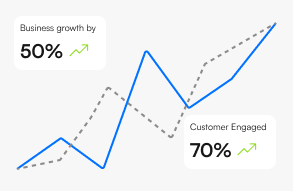How Many Languages Does ChatGPT Support?

Rajesh Bhattacharjee
November 27, 2023
7 min

Table of Contents
In our increasingly interconnected global landscape, seamless communication across diverse languages is a pivotal cornerstone. Enter ChatGPT: a trailblazing AI chatbot that’s not just breaking down linguistic barriers but is redefining them. This blog takes you on an exploratory journey into the realm of “chatgpt languages,” unraveling the linguistic tapestry that makes ChatGPT a polyglot marvel.
We’ll also demystify the core question: “What language is ChatGPT written in?” Prepare to dive into a narrative that’s as enlightening as it is crucial for anyone eager to harness AI for transcending linguistic frontiers, whether in business or personal interactions. Get ready for a read that’s packed with insights and a beacon for those navigating the vast seas of global communication through AI.
What is the Range of Languages Supported by ChatGPT?
ChatGPT has revolutionized how we interact with machines, transcending language barriers and making digital communication more inclusive. With its ability to understand and respond in over 50 languages, including widely spoken ones like English, Spanish, French, and Chinese, ChatGPT is not just a tool; it’s a bridge connecting diverse cultures and languages.
How ChatGPT Achieve Multilingual Proficiency?
ChatGPT harnesses cutting-edge linguistic technologies and complex modeling techniques to effectively identify, interpret, and translate various languages, catering to a global audience.
Outlined below are three distinct aspects that set ChatGPT apart:
Multi-Model Language Support
ChatGPT utilizes a sophisticated, layered approach to process languages effectively. This process begins with the initial layer, which is adept at pinpointing the user’s specific language. The second layer applies advanced natural language processing (NLP) techniques. These include sentiment analysis and intent detection, which are crucial for grasping the user’s input’s deeper context and underlying meaning.
The final stage of this intricate process involves translating the user’s input into English or another supported language by ChatGPT. This ensures that the responses generated are accurate and highly relevant to the user’s query or statement.
Language Recognition Across Dialects and Accents
A key strength of ChatGPT lies in its adeptness at recognizing a broad spectrum of languages, including their distinct dialects and accents. This ability ensures that users from diverse regions can effortlessly communicate with the custom ai chatbot in their native tongue, enabling smooth and inclusive interactions.
Advanced Linguistic and Analytical Features
Beyond essential text recognition and translation, ChatGPT is equipped with advanced features like voice and image recognition and emotion detection. These features enhance the user experience by allowing more natural and varied forms of interaction, such as speaking or uploading images, and enable the chatbot to respond more effectively to the user’s needs.
Supported Languages by ChatGPT
Here’s an alphabetical list of languages and their corresponding countries/regions that ChatGPT supports:
- Albanian (Albania)
- Arabic (Arab World)
- Armenian (Armenia)
- Awadhi (India)
- Azerbaijani (Azerbaijan)
- Bashkir (Russia)
- Basque (Spain)
- Belarusian (Belarus)
- Bengali (Bangladesh)
- Bhojpuri (India)
- Bosnian (Bosnia and Herzegovina)
- Brazilian Portuguese (Brazil)
- Bulgarian (Bulgaria)
- Cantonese (Yue) (China)
- Catalan (Spain)
- Chhattisgarhi (India)
- Chinese (China)
- Croatian (Croatia)
- Czech (Czech Republic)
- Danish (Denmark)
- Dogri (India)
- Dutch (Netherlands)
- English (United Kingdom)
- Estonian (Estonia)
- Faroese (Faroe Islands)
- Finnish (Finland)
- French (France)
- Galician (Spain)
- Georgian (Georgia)
- German (Germany)
- Greek (Greece)
- Gujarati (India)
- Haryanvi (India)
- Hindi (India)
- Hungarian (Hungary)
- Indonesian (Indonesia)
- Irish (Ireland)
- Italian (Italy)
- Japanese (Japan)
- Javanese (Indonesia)
- Kannada (India)
- Kashmiri (India)
- Kazakh (Kazakhstan)
- Konkani (India)
- Korean (South Korea)
- Kyrgyz (Kyrgyzstan)
- Latvian (Latvia)
- Lithuanian (Lithuania)
- Macedonian (North Macedonia)
- Maithili (India)
- Malay (Malaysia)
- Maltese (Malta)
- Mandarin (China)
- Marathi (India)
- Marwari (India)
- Min Nan (China)
- Moldovan (Moldova)
- Mongolian (Mongolia)
- Montenegrin (Montenegro)
- Nepali (Nepal)
- Norwegian (Norway)
- Oriya (India)
- Pashto (Afghanistan)
- Persian (Farsi) (Iran)
- Polish (Poland)
- Portuguese (Portugal)
- Punjabi (India)
- Rajasthani (India)
- Romanian (Romania)
- Russian (Russia)
- Sanskrit (India)
- Santali (India)
- Serbian (Serbia)
- Sindhi (Pakistan)
- Sinhala (Sri Lanka)
- Slovak (Slovakia)
- Slovenian (Slovenia)
- Ukrainian (Ukraine)
- Urdu (Pakistan)
- Uzbek (Uzbekistan)
- Vietnamese (Vietnam)
- Welsh (Wales)
- Wu (China)
What Languages Is ChatGPT Written In?
ChatGPT, a sophisticated chatbot specializing in natural language processing (NLP), is rapidly becoming a prominent tool in the industry. Its operation relies on diverse technologies and programming languages, positioning it as an invaluable AI asset for businesses. To comprehend the programming languages that form the backbone of ChatGPT, we’ll explore its key components:
Core Programming Languages
Python
At the heart of ChatGPT lies Python, a versatile and widely used programming language. Python’s simplicity and powerful libraries make it ideal for handling complex NLP tasks.
TensorFlow and PyTorch
These are advanced machine learning libraries used for building and training the AI models that power ChatGPT. TensorFlow, developed by Google, and PyTorch, developed by Facebook, are instrumental in processing large datasets and performing intricate computations that underpin ChatGPT’s language processing abilities
NLP Libraries and Frameworks
spaCy, Gensim, NLTK, and OpenNMT-py are specialized NLP libraries and frameworks layered on top of the core languages. Each offers unique features:
- spaCy is known for its speed and efficiency in text processing.
- Gensim excels in unsupervised topic modeling and natural language understanding.
- NLTK (Natural Language Toolkit) is a comprehensive symbolic and statistical natural language processing suite.
- OpenNMT-py specializes in neural machine translation, which is crucial for ChatGPT's translation capabilities.
Integration with Additional Libraries and APIs
ChatGPT also integrates with other libraries and APIs like Dialogflow and Wit.AI to enhance its functionalities. Dialogflow, for instance, enhances ChatGPT’s conversational capabilities, enabling it to understand and process user queries more effectively.
Wit.AI contributes to features like speech recognition and text summarization, broadening the scope of ChatGPT’s interactive abilities.
ChatGPT’s Programming Language Spectrum
1.JavaScript
As a widely-used scripting language, JavaScript enables complex logic structures and functions, making it essential for interactive web applications. ChatGPT’s support for JavaScript allows seamless integration into web-based platforms, enhancing user interaction and functionality.
2. Python
Renowned for its role in web development, AI, data science, and machine learning, Python’s high-level capabilities are integral to ChatGPT’s operations. Its simplicity and powerful libraries make it ideal for handling sophisticated AI tasks related to natural language processing.
3.Java
A versatile, object-oriented language, Java is utilized across various industries, from finance to healthcare. Its robustness and security features are crucial for developing server-side applications. ChatGPT’s compatibility with Java enables the creation of secure, scalable, and efficient AI-driven solutions.
4. Additional Languages
ChatGPT also supports major coding languages like C++, PHP, Ruby, and Go. This extensive support allows developers to choose the most suitable programming environment for their specific project needs, whether it’s for creating complex algorithms or developing user-friendly interfaces.
What Are the Benefits of a Multilingual ChatGPT?
Enhanced Accessibility
By supporting numerous languages, ChatGPT becomes accessible to a broader audience. Users from various linguistic backgrounds can interact with the AI in their native language, making technology more inclusive.
Improved Customer Experience
Businesses can leverage ChatGPT to provide customer support in multiple languages. This leads to better customer satisfaction as users receive assistance in the language they are most comfortable with.
Cross-Cultural Communication
ChatGPT’s multilingual feature facilitates communication across different cultures, promoting understanding and reducing the likelihood of miscommunication in international interactions.
Educational Tool
It is an excellent tool for language learning and cultural exchange, allowing users to practice and improve their language skills in a conversational setting.
Business Expansion
For businesses looking to expand globally, ChatGPT can be a valuable asset in understanding and engaging with new markets without the barrier of language.
Real-Time Translation
ChatGPT can act as a real-time translator, making communicating effectively easier for people speaking different languages. Cost-Effective: It reduces the need for multilingual staff or translation services, thereby saving costs for businesses and organizations.
Conclusion: The Future is Multilingual with ChatGPT
In summary, the multilingual features of ChatGPT represent more than just a technological milestone; they serve as a bridge to a more interconnected and inclusive digital landscape. For businesses, the capacity to converse with customers in their own languages stands as a potent instrument for international growth and enhancing customer experiences. As ChatGPT progresses, its influence on worldwide communication and business expansion is poised to escalate.
Adopt ChatGPT as your communication ally, and witness your business surpass linguistic obstacles, forging stronger connections with a global customer base in a way that was previously unattainable.

Grow Your Business with AI Chatbots
- Automate tasks
- Engage customers 24/7
- Boost conversions